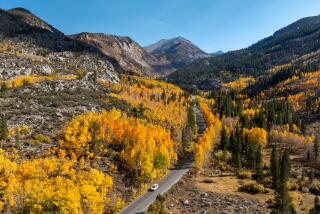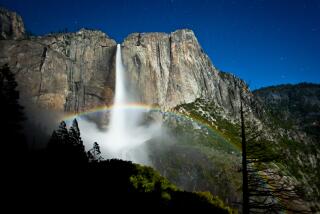Winter sunsets and sunrises really are more spectacular. Here’s why
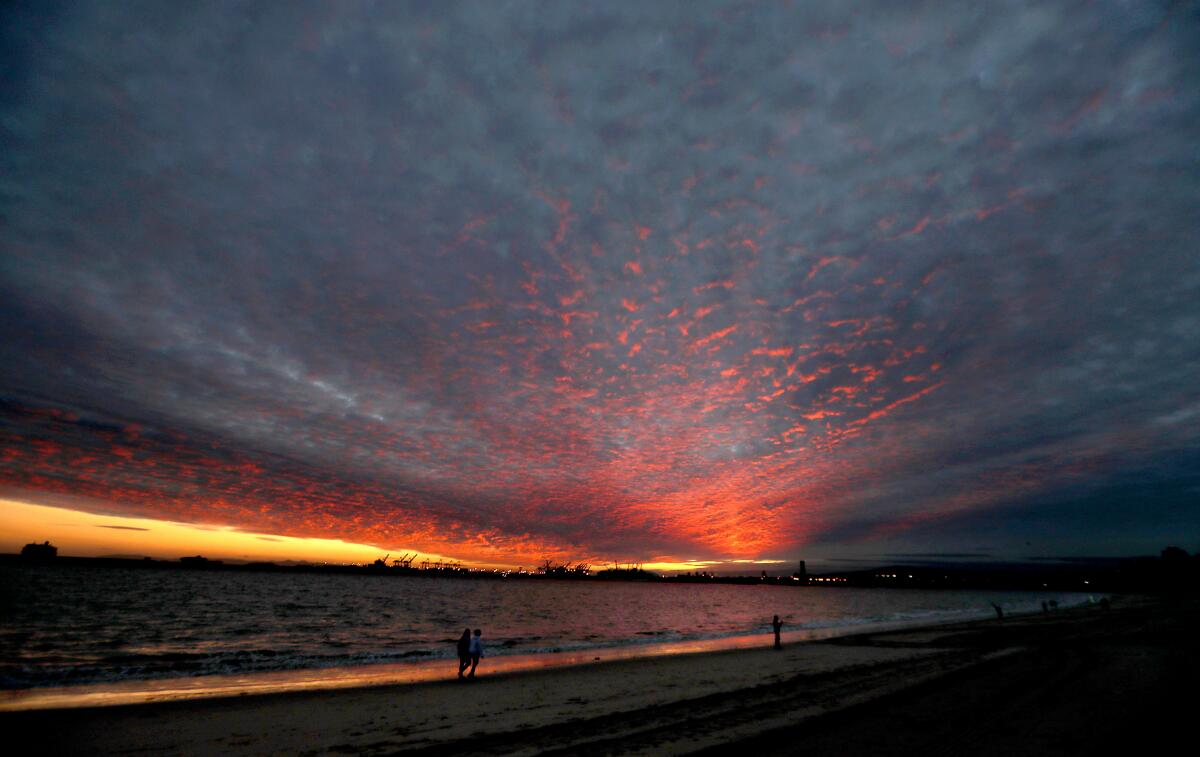
Sunrises and sunsets really are better in winter. It’s not unusual to see amazing pink, orange and purple hues in the sky as the sun is rising or setting in January and February. As the COVID-19 pandemic has kept most of us close to home, the daily bursts of color offer safe bets to get outside and watch the light show.
Stephen LaDochy, who teaches meteorology and climatology at Cal State Los Angeles, chalks up the colors to atmospheric optics. “It’s different types of scattering, reflection and refraction of light,” he said. Translation: Light is made up of different colors, each with its own range of wavelengths. Blue and green light waves are shorter, which means they bounce and scatter more easily. At sunset, those colors get filtered out, leaving longer wavelengths of reds and oranges that can make your heart melt.
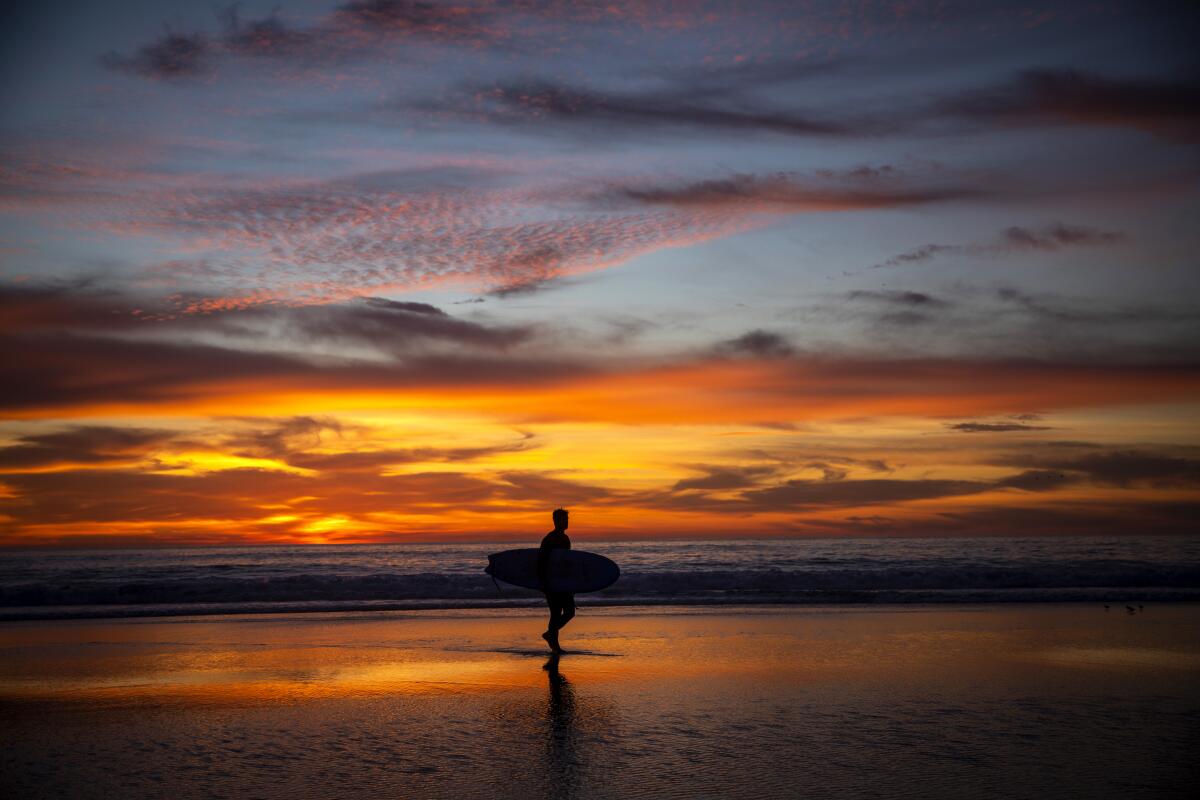
But there’s something else going on in winter. Sunsets become more vivid because of low humidity and cleaner air, especially after it rains. That means there are fewer particulates to wash out colors and create hazy sunsets, which are more typical in summer. Also, the Earth spins closer to the sun in winter, and the “angle the sun takes setting makes sunset colors last a bit longer,” National Oceanic and Atmospheric Administration meteorologist Stephen Corfidi told Vox.
Get The Wild newsletter.
The essential weekly guide to enjoying the outdoors in Southern California. Insider tips on the best of our beaches, trails, parks, deserts, forests and mountains.
You may occasionally receive promotional content from the Los Angeles Times.
The final ingredient: clouds, which reflect the stunning hues back at us. “Clouds make it much more brilliant,” LaDochy says. “They act like a [viewing] screen.”
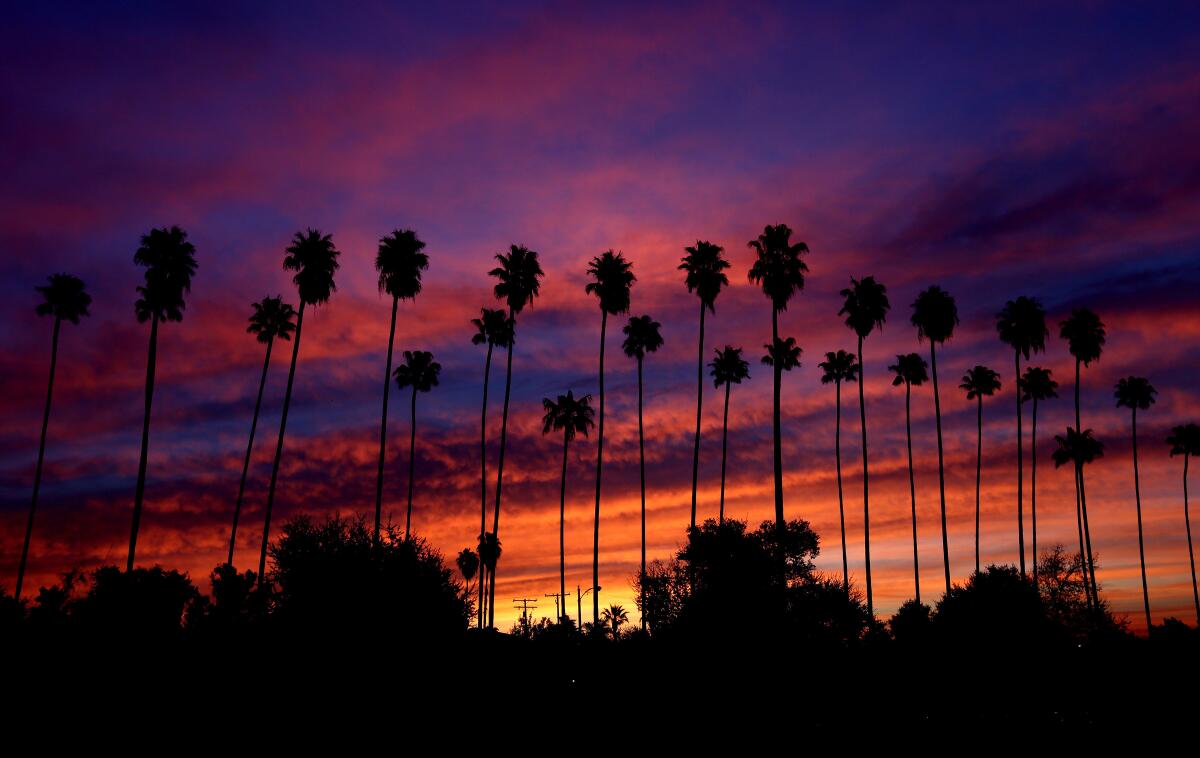
I noticed the colors last year while driving west in San Pedro late in the afternoon on New Year’s Day. I watched thick puffs of clouds overhead churn from periwinkle blue to flaming orangey pink in what seemed like seconds.
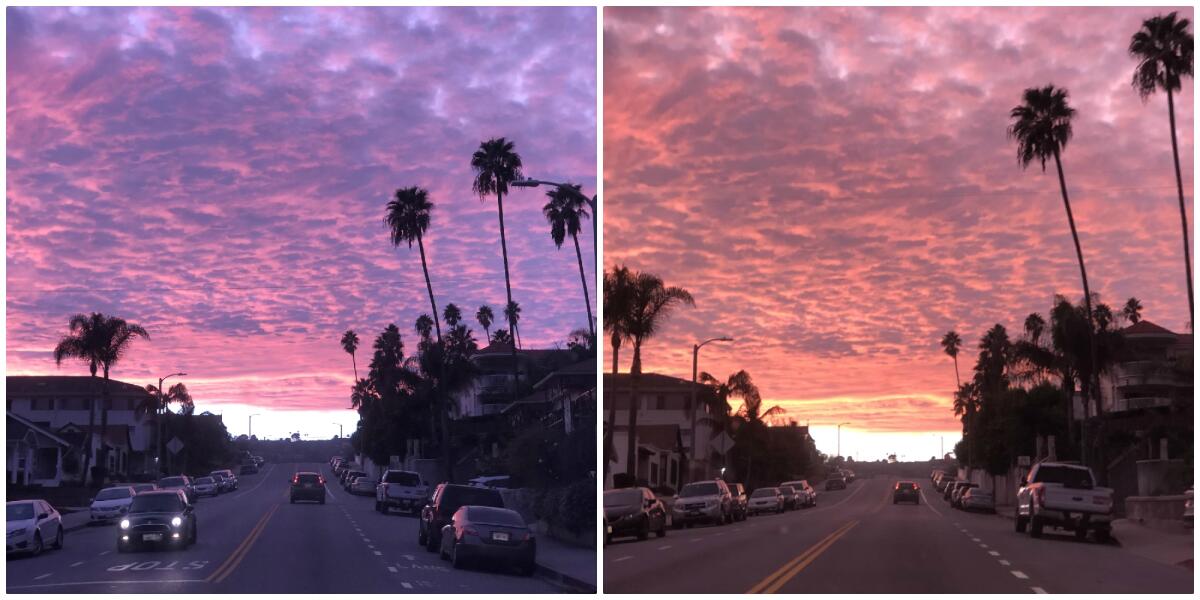
When it comes to good places to watch the sun sink or rise, any beach or high point will do. Just make sure you’re in a spot with a wide view of the horizon. My picks for places that offer space to spread out include:
- Palisades Park in Santa Monica, next to the famed Santa Monica Pier, which parallels Ocean Avenue and offers wide-angle views of the beach below.
- Point Fermin Park at 807 Paseo Del Mar in San Pedro affords cliffside views of the ocean, the Palos Verdes Peninsula and Catalina Island.
- Charmlee Wilderness Park at 2577 Encinal Canyon Road in Malibu was made for sunset viewing. It’s high atop ocean bluffs and even has some benches pointed at the horizon.
- Parker Mesa Overlook in Topanga State Park also offers wide-angle panoramas of the Malibu coast. It’s best for sunsets. Hike in about 3 miles one way (there are multiple ways to get there) to arrive at the overlook in time for the sun to set.
- Stuck in the city? Head up to the Griffith Observatory at 2800 E. Observatory Road for a long view of the L.A. Basin. If you have time and want a higher point, take the Charlie Turner Trail off the parking lot up to Mt. Hollywood (1,625 feet in elevation). It’s about a mile and a half each way. This is the one place that may be a bit more crowded than the others.
What happens to the light on rainy days? “Rain and clouds ... block sunlight, but also produce rainbows, if the sun peeks out behind your back as you look at refracted light through raindrops,” LaDochy said. “Often the larger droplets produce the brighter rainbow colors.”
Here are tips on how to get the most out of winter sunset and sunrise viewing.
Be on time. Shorter days mean early sunsets, and you don’t want to miss the celestial show. Check out timeanddate.com for when the sun will set in your area. Plan to be in place about a half-hour before to watch the show.
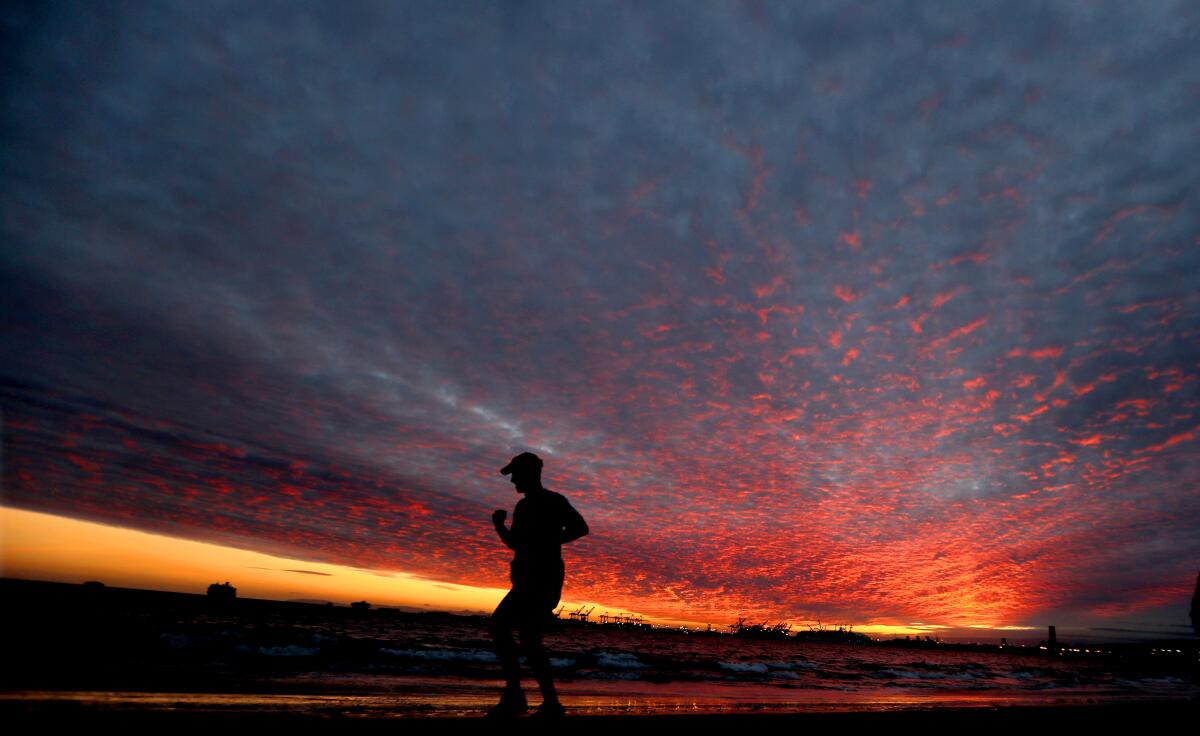
Need inspiration? Listen to author John Green (“The Fault in Our Stars,” “Turtles All the Way Down”) explain why sunsets should always spark awe in his podcast “Capacity for Wonder and Sunsets,” an episode of “The Anthropocene Reviewed” (bit.ly/sunsetawe).
More to Read
Updates
2:37 p.m. Feb. 2, 2021: Photographs updated throughout.
Sign up for The Wild
We’ll help you find the best places to hike, bike and run, as well as the perfect silent spots for meditation and yoga.
You may occasionally receive promotional content from the Los Angeles Times.

